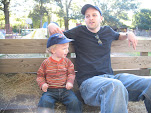I like what I've been reading by this guy! This is the second part of his review of
Breaking the Missional Code. Stetzer and Putnam refer to three types of emergent churches: relevants, reconstructionists, and revisionists. They appreciate and promote the first two types, but warn against the third type. You can read more
here.
Bolger is not so sure that being a revisionist is so bad. (Actually, he doesn't like the term
revisionist, so he uses a
self-theologizing, which is pretty different). Here's what he writes:
In the nineteenth century, Rufus Anderson and Henry Venn contributed a new idea to missiology -- that of the three-self formula. They advocated that a new church work or mission, if it is to become indigenous, must be self-supporting, self-propagating, and self-governing. My colleague, Charles Van Engen, mission theologian (and former President of the Reformed Church of America), advocates a fourth 'self' -- self-theologizing. Why his addition to the formula?
A new community must be self-theologizing or it will become nominal. Self-theologizing, how? To become an indigenous expression of faith, a community must form its life around scripture, engaging their culture within a praxis-reflection orientation. In other words, the community goes deep into the word in order to answer the questions of their culture. They 'practice' those answers in the world, and then reflect biblically again. Instead of self-theologizing, however, what frequently happens is that new faith communities are given a theology that answers nineteenth-century questions, or sixteenth-century questions, or fifth-century questions. These historical works will undoubtedly be helpful, but they will inevitably leave some questions unanswered. Each context presents its own issues. If the deep questions of a culture go unanswered, then Christians will seek answers elsewhere, without reference to scripture, thus inviting in nominality.
What Stetzman and Putman call revisionist I see as self-theologizing: reading scripture in light of a culture's questions. These emerging "self-theologians" copy the example of historical theologians engaging their particular culture) but they do not necessarily copy their responses.
